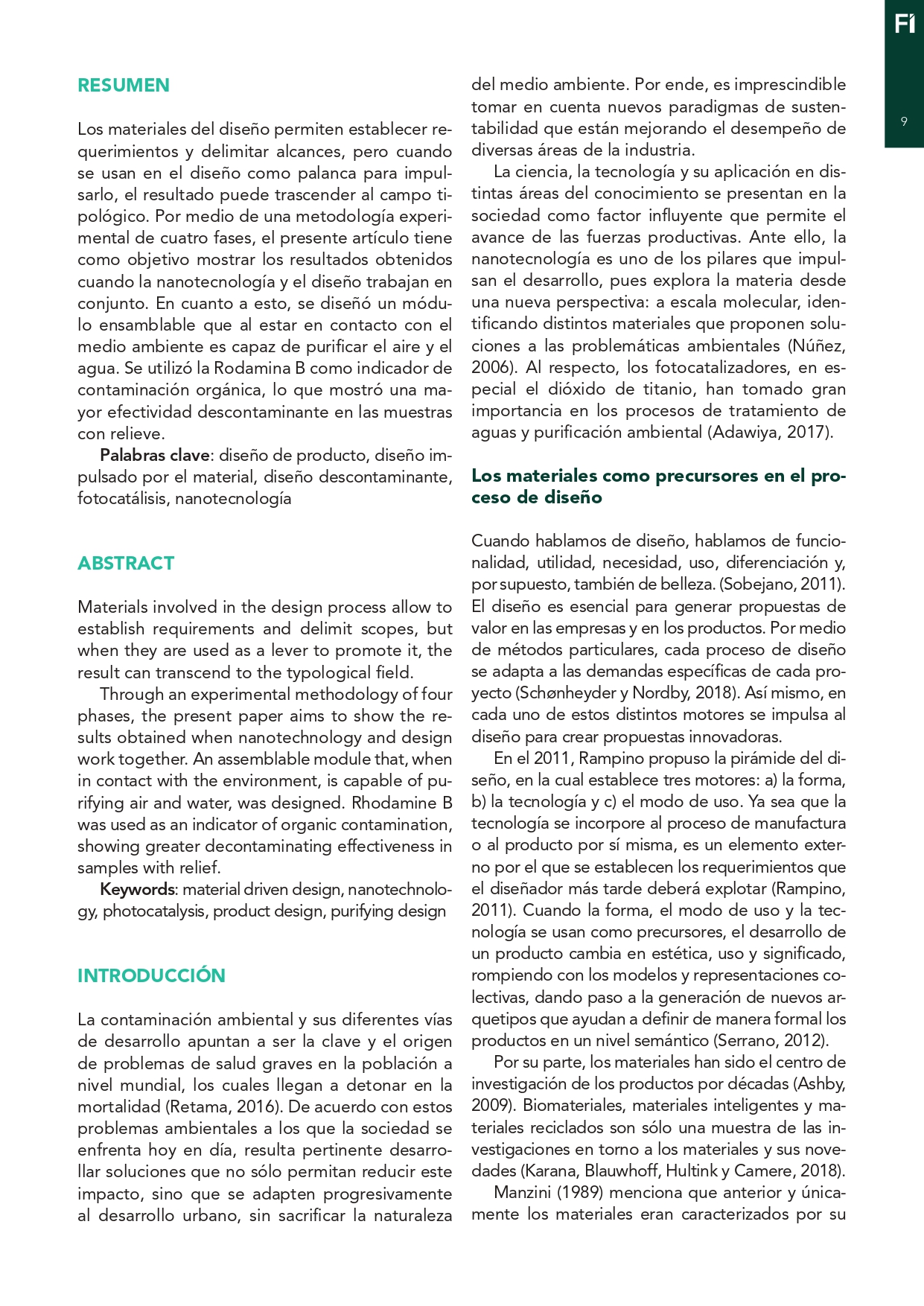Abstract
Materials involved in the design process allow to establish requirements and delimit scopes, but when they are used as a lever to promote it, the result can transcend to the typological field. Through an experimental methodology of four phases, the present paper aims to show the results obtained when nanotechnology and design work together. An assemblable module that, when in contact with the environment, is capable of purifying air and water, was designed. Rhodamine B was used as an indicator of organic contamination, showing greater decontaminating effectiveness in samples with relief.
This work is licensed under a Creative Commons Attribution-NonCommercial 4.0 International License.

